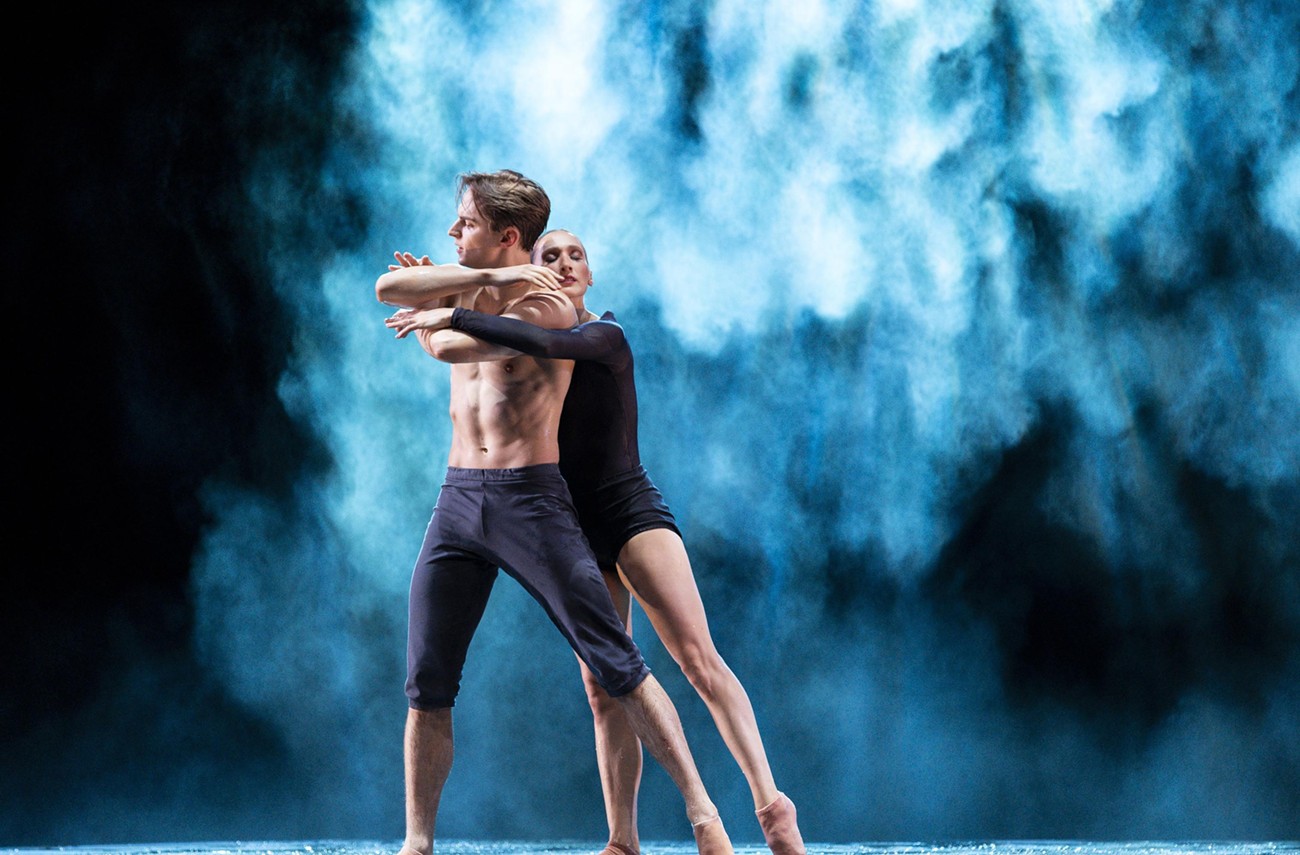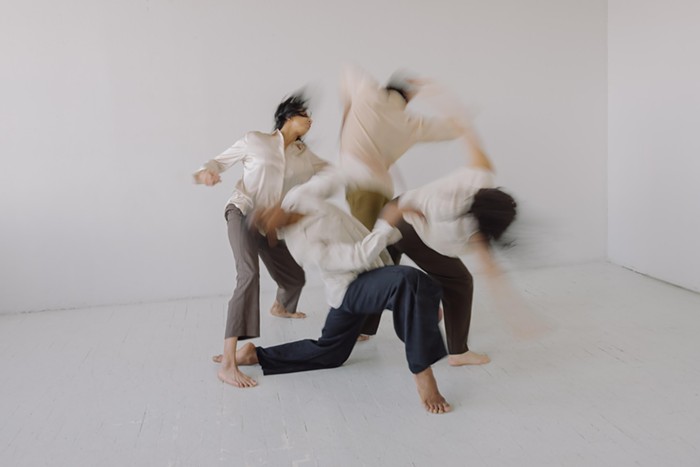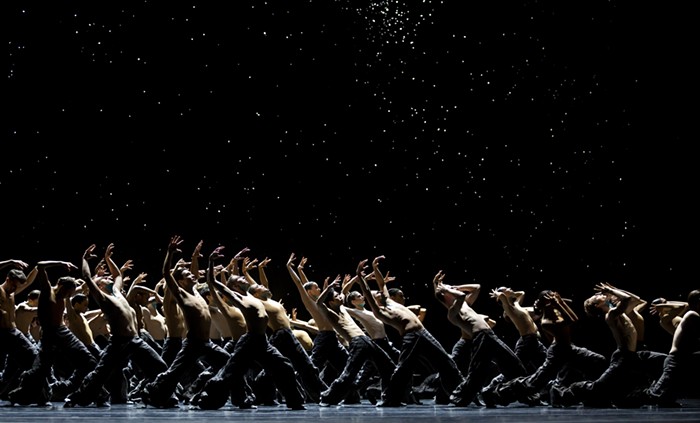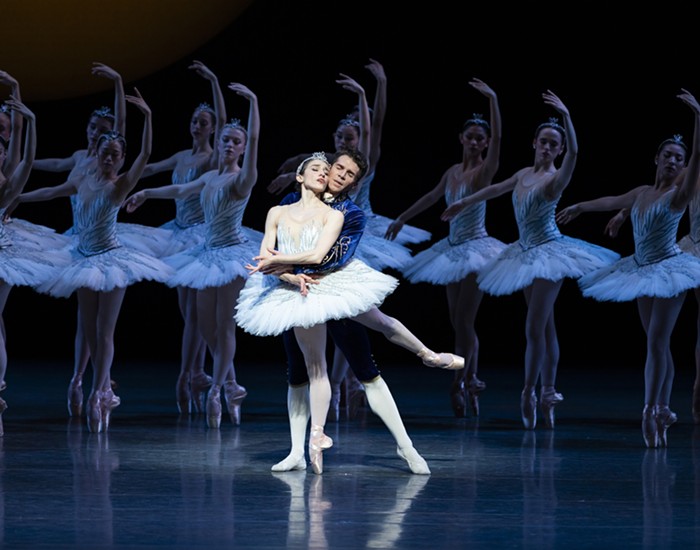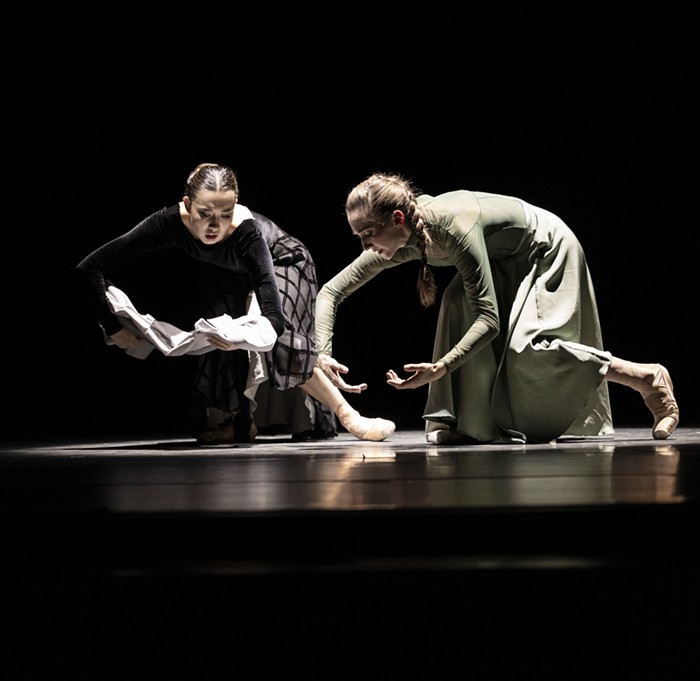When I first saw Alejandro Cerrudo's One Thousand Pieces, I thought it might be the last the last ballet I would ever review—and technically I couldn't even review it.
Just before the world snapped shut for COVID, the Pacific Northwest Ballet invited a handful of journalists (and some PNB students) to watch a dress rehearsal of the epic, 70-minute ballet the company had been toiling over for six weeks. The catch? Reviewing dress rehearsals is mean, and so we writers had to agree to write about the experience but not the performances. The Stranger planned layoffs the following day, and I didn't know my fate or if I'd even have a place to publish my non-review. Nevertheless, I walked into the black maw of McCaw Hall and took a seat. When the curtain rose on a line of dancers touching one another, I teared up at the thought of not knowing when it'd be safe to touch my own eyes—let alone anyone else—again.
Last week marked four years since that day, and now Cerrudo's dark marvel has finally seen its full PNB premiere. Though the ballet, which runs through March 24, didn't make me bawl for an hour the way it did back when we were all sitting on the precipice of a once-in-a-generation pandemic, the show still held every second of my attention, and there's no question that it deserves heavy rotation and a high place in the contemporary canon.
Before the program's descent into the shadows of One Thousand Pieces, PNB hits the audience with Matthew Neenan's Bacchus, a pretty, lyrical ballet driven by the spritely strings in composer Oliver Davis's composition. PNB gave this piece its first stage in 2019, and it pleases in the way spring's first crocuses, daffodils, and cherry blossoms please.
Randall G. Chiarelli's lighting design dazzles with kaleidoscopic color, breathing life into the piece and giving it a sense of forward progression and a real drama that exists as a matter of course in the music but that isn't exactly highlighted in the choreography.
Mark Zappone decked the dancers in playful costumes—the men wore loose purple pants and sheer purple shirts with only the top button fastened, and the femmes wore a purple leotard with an intricate stained-glass-cut back and a sheer skirt. The men's shirts looked kinda awkward, and the skirts gave some of the femme dancers a little mobility trouble, but the flowing fabric did contribute to the ballet's primary project of transforming the dancers into violet butterflies fluttering in a field of flowers, so ultimately I approve.
The ballet's a real ensemble piece, but several performances stood out. Principal Dylan Wald leapt across the stage like a teenage deer. His movements were impossibly smooth and swift, his arms cutting through the air like scythes. Principal James Yoichi Moore delivered a moving solo with such grace and good acting that it made me sad about his upcoming retirement. Toward the end, Principals James Kirby Rogers and Elizabeth Murphy paired up for a duet that made me lose my shit; lots of tremendous lifts, long legs, and big feelings.
Apart from the dress rehearsal before the end of the world, One Thousand Pieces saw its first and only run in Chicago back in 2012, so last weekend's premiere carried all the anticipation of a world premiere—and there was a lot to anticipate.
The ballet features several big-ass glass windows that dangle and spin from the ceiling like post-apocalyptic disco balls (Cerrudo created the piece in response to Marc Chagall's American Windows, which you should make a point to see at the Art Institute of Chicago if you haven't already), a section where the dancers become water nymphs and splash around in gorgeous glowing mist, a moment where a dancer floats through the night sky, and all manner of other stage trickery. Lots could go wrong, but not much—if anything—did on opening night.
With its COVID resonances faded a little, the ballet now reads to me like a natural disaster film choreographed by Alejandro Cerrudo, scored by Philip Glass, and shot in the shades of Chagall's dark and yet somehow luminous blues. It looks like Cerrudo stopped time during some kind of earthquake-tornado-tsunami and then decided to stage a ballet in the middle of the falling wreckage.
In one duet early on, for instance, the dancers crawl all over each other in slow motion like they're trying to escape a lava flow. At other points, dancers catch and redirect other dancers, and then reverse the process, as if nobody really knows the right way to go. Cerrudo always makes his dancers move like gyroscopes in perpetual motion, constantly spinning, ducking, weaving, tangling, and detangling, but in this case those movements recalled the chaos of people fleeing some nameless terror.
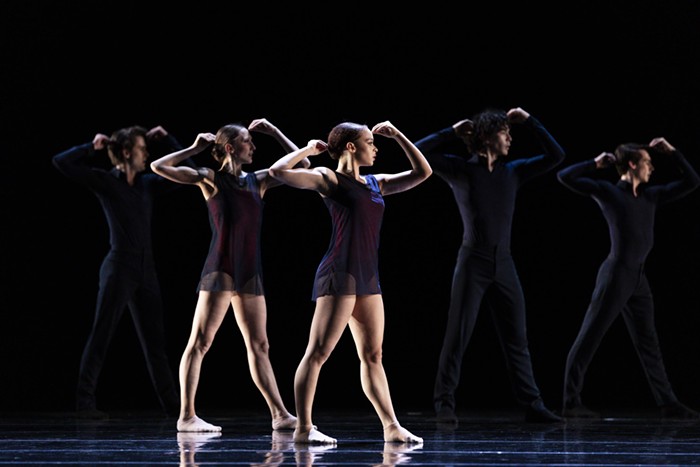
All that darkness, all those sharp angles, and all those frantic movements makes the few bright, soft, beautiful moments hit like a bus crashing through a bank window. The first example that leaps to mind is the section where a dancer in cap and tails hangs from the ceiling as the orchestra plays Glass's "Knee Play 5," which features a violin solo that I'm pretty sure I want to hear on my death bed (if I'm lucky enough to go that way). On opening night, soloist Miles Pertl floated through the air and recited the song's sweet love story in a baritone that made me think he had a bright future in reading audio books.
The second bright, soft, beautiful part ranks as the most compelling five minutes or so of ballet that I've ever seen. Dancers emerge from cascading mists and dance with long, slow gestures that perfectly contrast with Glass's urgent, precise, manic-depressive piano. As they slip and slide and splash around the stage, streams of water arc off each foot flick and spin, catching the light like fairy dust. It's completely hypnotizing, and I could watch it for maybe six or seven hours, though I'd worry about the dancers getting pruney.
Speaking of, though this 24-dancer ballet is ALSO a real ensemble piece, yet again Murphy shined here. She moved with a confidence and fluidity that exactly matched Cerrudo's vocabulary. Soloists Christopher D'Ariano and Leah Terada paired well as always, and at one point Terada performed a quick but high-impact solo I could only describe as multi-dimensional. Corps de ballet dancer Noah Martzall executed a low front thrust kick followed by a high spinning back-kick in a single movement that required more balance and strength that I thought possible. Principals Angelica Generosa, Jonathan Batista, Sarah-Gabrielle Ryan, and also corps dancer Melisa Guilliams nailed their assignments throughout.
Just incredible work all around. Certainly worth a couple hours of your one precious life, especially on pay-what-you-can Thursdays.
